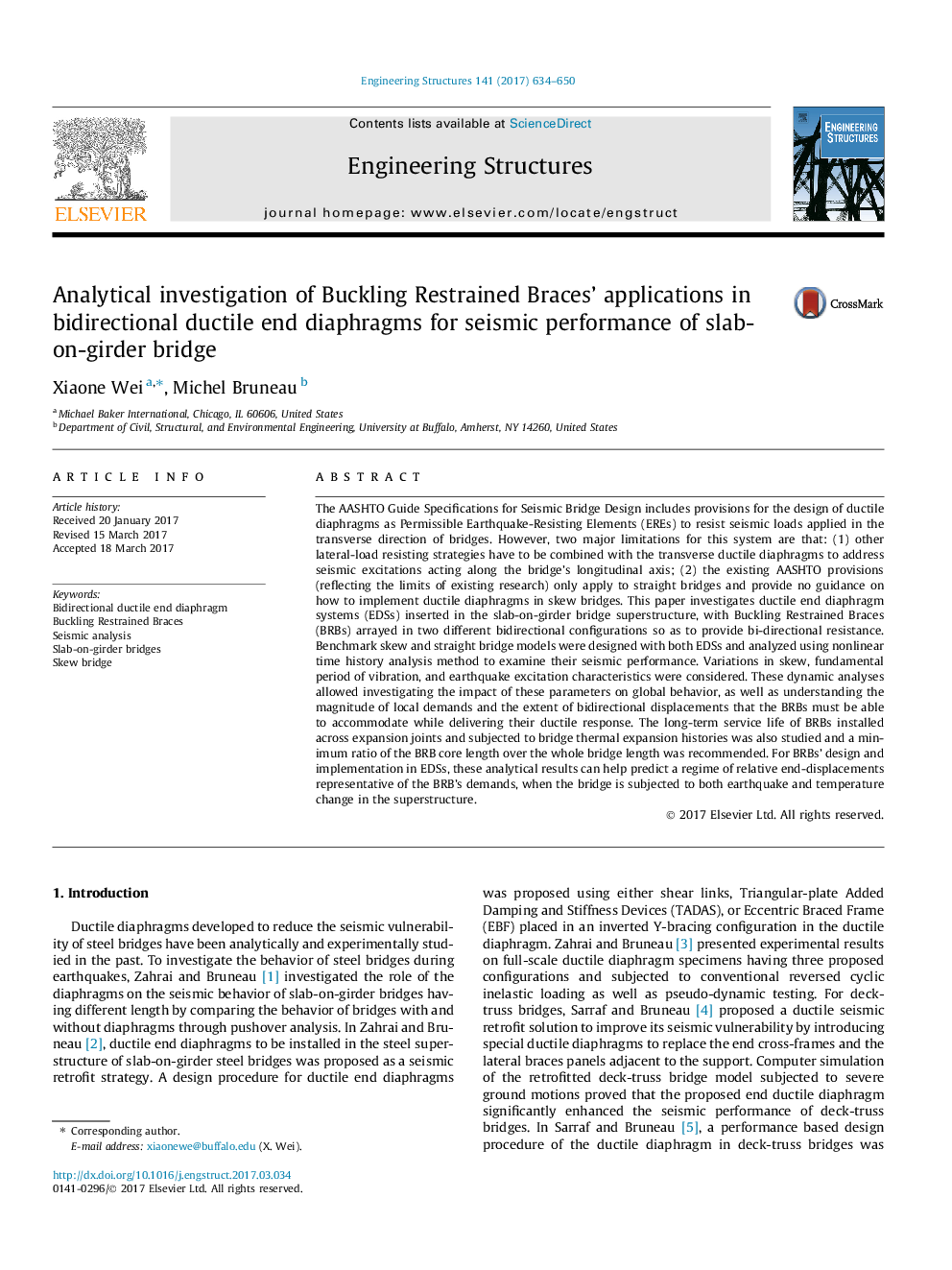| کد مقاله | کد نشریه | سال انتشار | مقاله انگلیسی | نسخه تمام متن |
|---|---|---|---|---|
| 4920274 | 1429086 | 2017 | 17 صفحه PDF | دانلود رایگان |
عنوان انگلیسی مقاله ISI
Analytical investigation of Buckling Restrained Braces' applications in bidirectional ductile end diaphragms for seismic performance of slab-on-girder bridge
ترجمه فارسی عنوان
تحقیقات تحلیلی از برنامه های کاربردی پرانتز مهارکشی در دیافراگم انتهای دو طرفه مجسمه سازی برای انجام عملیات لرزه ای پل های سنگی بر روی پل
دانلود مقاله + سفارش ترجمه
دانلود مقاله ISI انگلیسی
رایگان برای ایرانیان
کلمات کلیدی
دیافراگم پایان دوطرفه پرانتز محدود تجزیه و تحلیل لرزه ای، پلهای بر روی پلها، پل پیچ
موضوعات مرتبط
مهندسی و علوم پایه
علوم زمین و سیارات
مهندسی ژئوتکنیک و زمین شناسی مهندسی
چکیده انگلیسی
The AASHTO Guide Specifications for Seismic Bridge Design includes provisions for the design of ductile diaphragms as Permissible Earthquake-Resisting Elements (EREs) to resist seismic loads applied in the transverse direction of bridges. However, two major limitations for this system are that: (1) other lateral-load resisting strategies have to be combined with the transverse ductile diaphragms to address seismic excitations acting along the bridge's longitudinal axis; (2) the existing AASHTO provisions (reflecting the limits of existing research) only apply to straight bridges and provide no guidance on how to implement ductile diaphragms in skew bridges. This paper investigates ductile end diaphragm systems (EDSs) inserted in the slab-on-girder bridge superstructure, with Buckling Restrained Braces (BRBs) arrayed in two different bidirectional configurations so as to provide bi-directional resistance. Benchmark skew and straight bridge models were designed with both EDSs and analyzed using nonlinear time history analysis method to examine their seismic performance. Variations in skew, fundamental period of vibration, and earthquake excitation characteristics were considered. These dynamic analyses allowed investigating the impact of these parameters on global behavior, as well as understanding the magnitude of local demands and the extent of bidirectional displacements that the BRBs must be able to accommodate while delivering their ductile response. The long-term service life of BRBs installed across expansion joints and subjected to bridge thermal expansion histories was also studied and a minimum ratio of the BRB core length over the whole bridge length was recommended. For BRBs' design and implementation in EDSs, these analytical results can help predict a regime of relative end-displacements representative of the BRB's demands, when the bridge is subjected to both earthquake and temperature change in the superstructure.
ناشر
Database: Elsevier - ScienceDirect (ساینس دایرکت)
Journal: Engineering Structures - Volume 141, 15 June 2017, Pages 634-650
Journal: Engineering Structures - Volume 141, 15 June 2017, Pages 634-650
نویسندگان
Xiaone Wei, Michel Bruneau,
